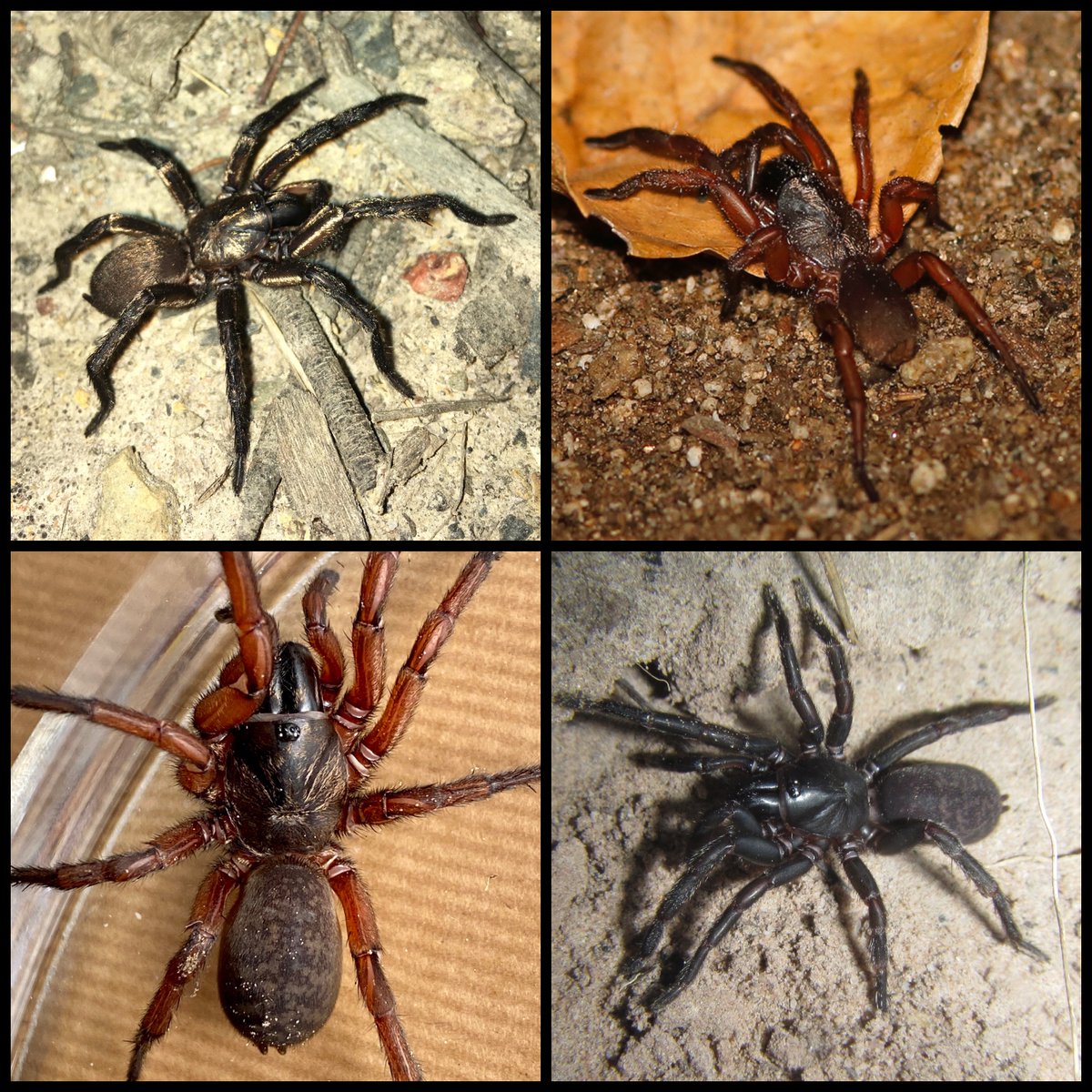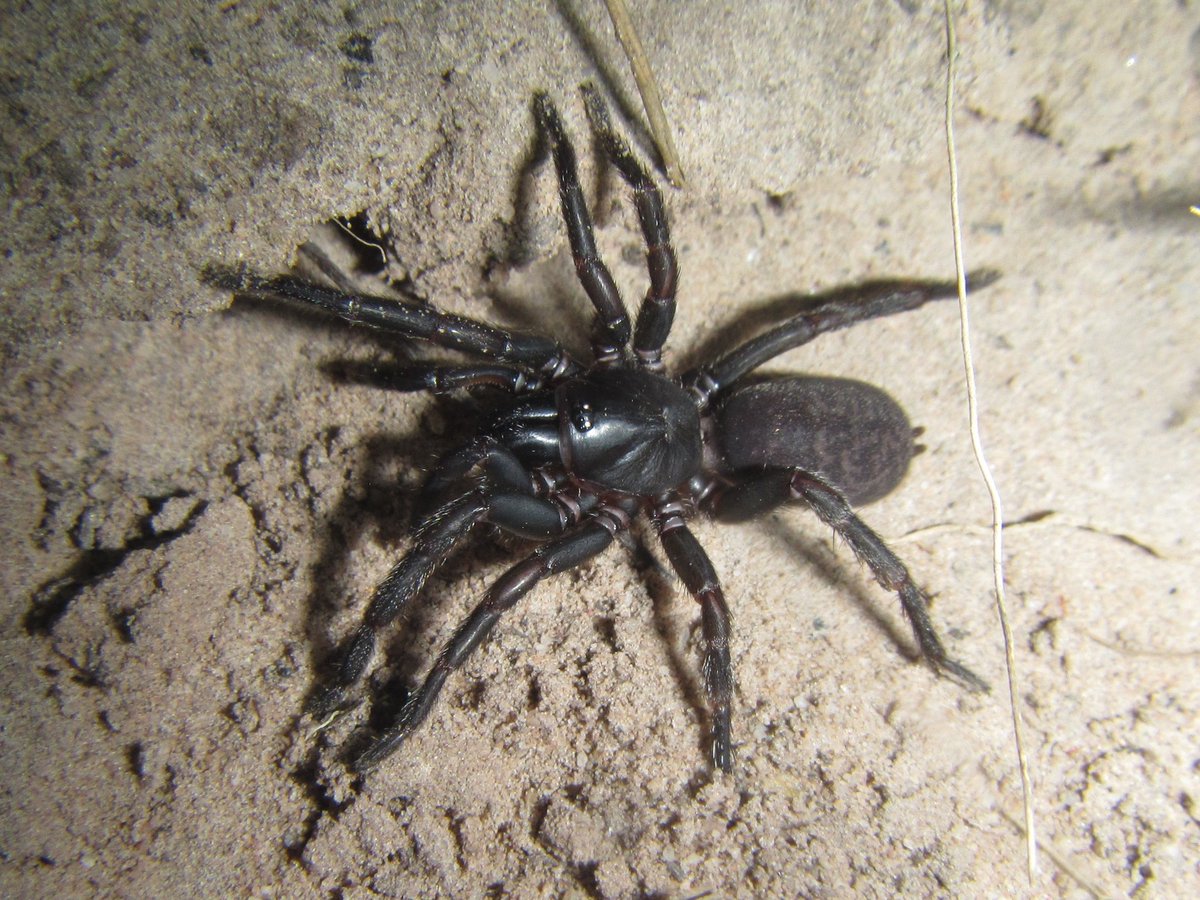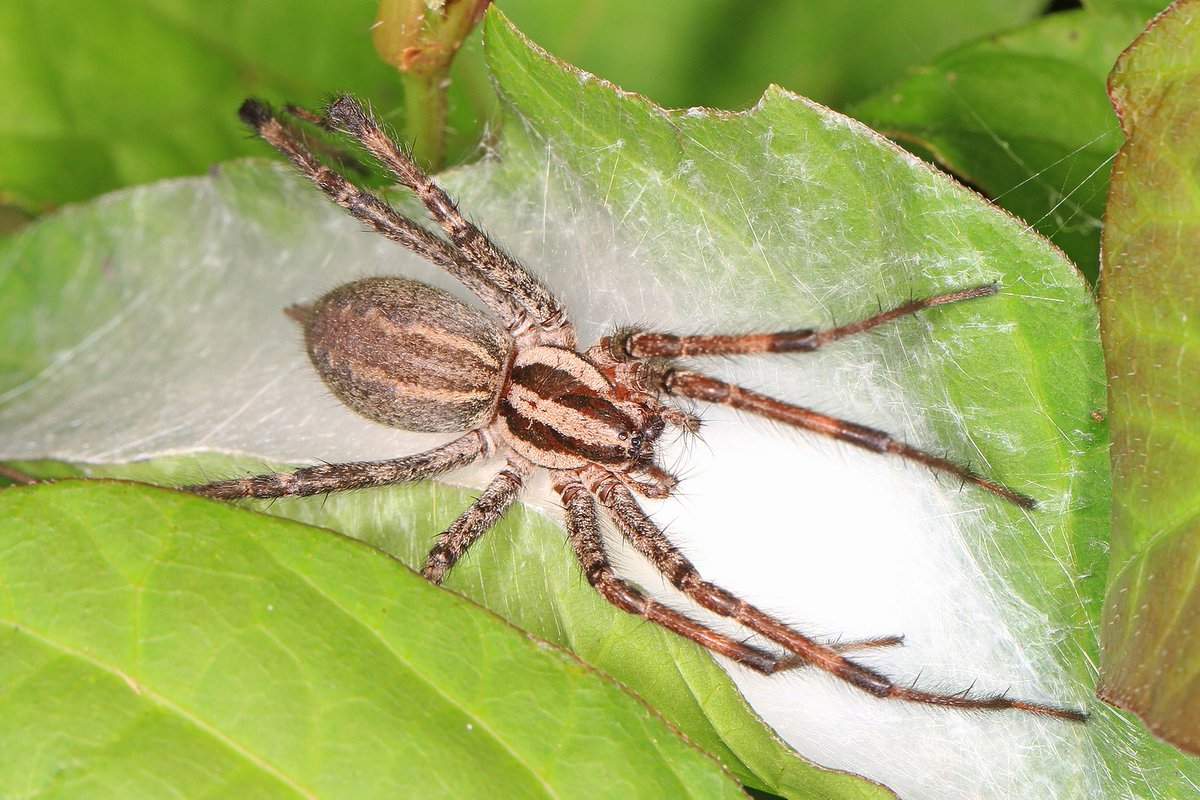
Another #ScienteaficABC. AMAUROBIIDAE! This family comprises 49 genera & ~275 species & can be found mostly around the world save for large swathes of the African, Asian & Australian continents, the Arctic & Antarctica. (images Wikimedia Commons & my own). 

Amaurobiid spiders are generally quite rounded & velvety looking, not too vibrant or brightly coloured in most cases (though as you can see here, A. similis does try!), vary in size from 5-30+mm body length, & tend to inhabit cracks, crevices & other sheltered spots. (Pic: mine) 

As with other spider families, eye arrangement is helpful (though by no means foolproof) in identifying Amaurobiidae. Here, enjoy another of my terrible diagrams! I shall accompany it with a photo to show you how they look on an actual A. fenestralis. (Image: Wikimedia Commons) 



Amaurobiidae are entelegyne spiders, which means they possess complex genitalia. To explain further needs its own thread, but for now it is relevant bc entelegynae is further split into 2 clades- dionychia & trionychia. What does this mean & why is it important? (Pic: mine) 
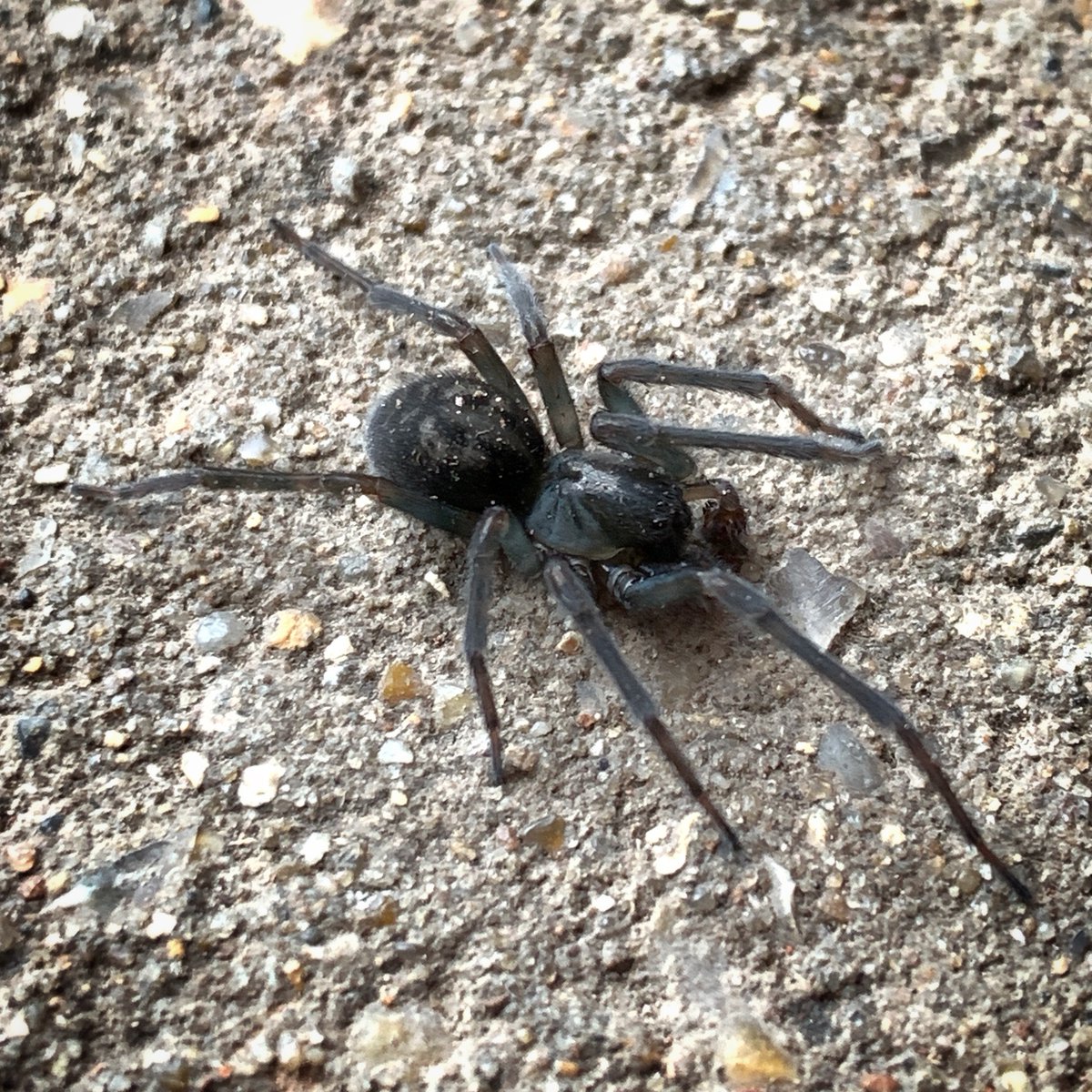
Dionychia = 2 clawed spiders. Trionychia = 3 clawed spiders. Amaurobiidae fall into the latter category which segues nicely into the next tweet. They are cribellate spiders, and all cribellate spiders are 3 clawed. Not all 3 clawed spiders are cribellate though! (Pic: Wiki) 
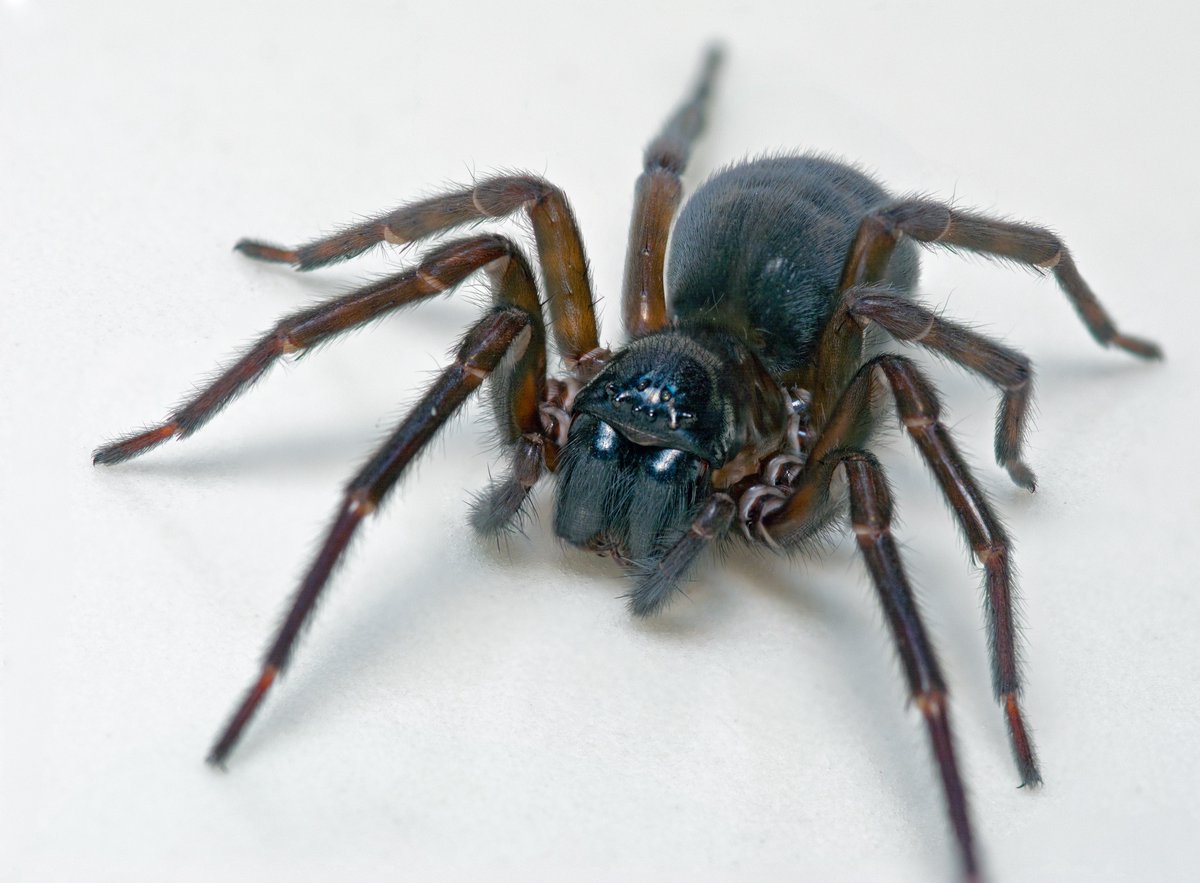
Amaurobiidae contains both cribellate & ecribellate spiders. And that means? Well, cribellate spiders have special silk spinning apparatus that enables them to make wooly, tangled masses of superfine silk strands that rely on electrostatic interactions for adhesion. (Pic: mine) 

Cribellate silk looks bluish white when it's fresh, fluffy/stretchy, & is v effective at ensnaring prey due to it being almost impossible to disentangle from, expecially if you're an insect with lots of spines & hairs etc. The cribellate species create 'regular' silk. (Pic: mine) 
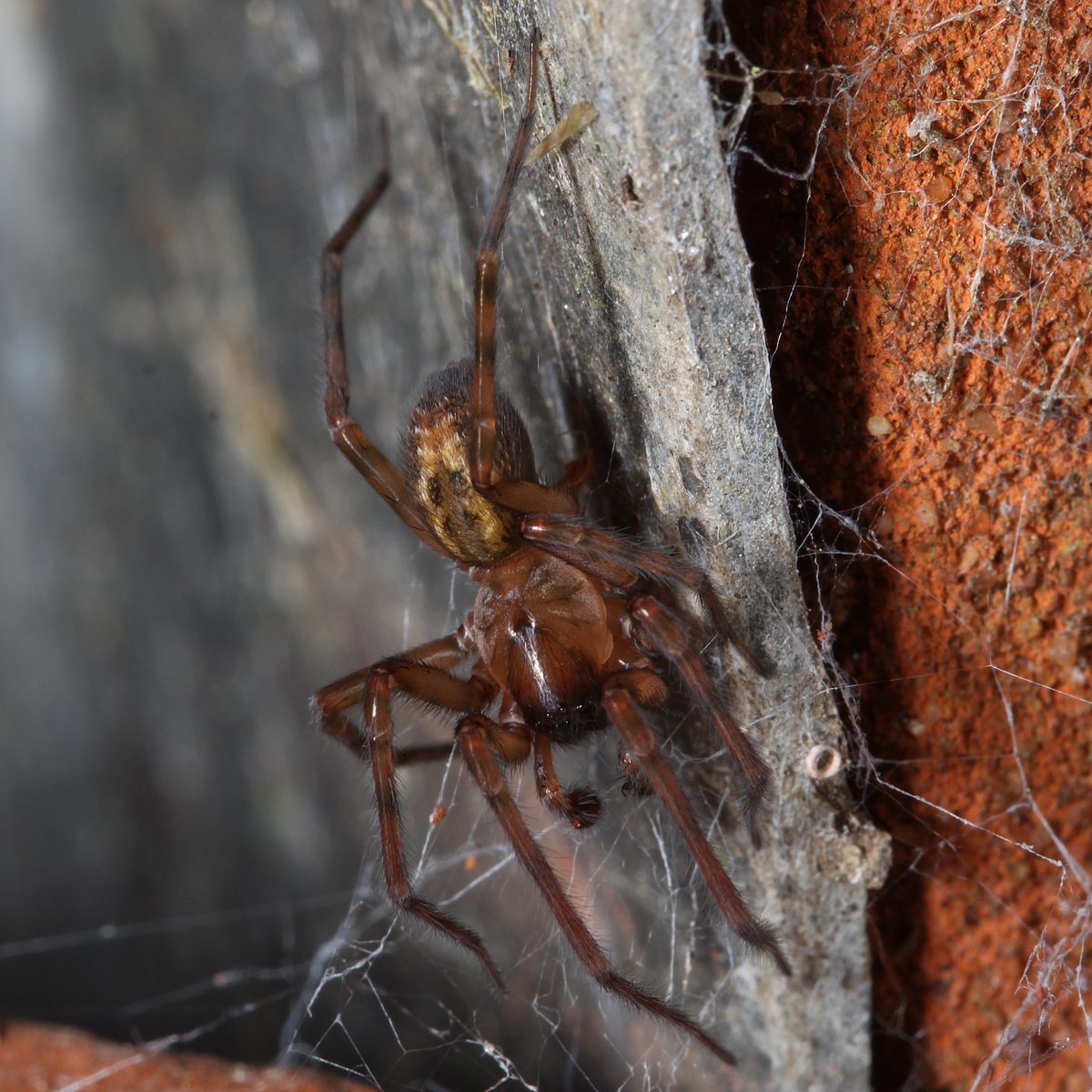
Finally, if you're in the UK & you go out at nighttime now, you're likely to see mature males out & about. I have lots on my doorstep every night! Also, these are not a medically significant family. Much like Agelenidae, a bite would be unusual & harmless anyway. Lovely spiders!
I made that video a few weeks ago before I knew I'd be doing this so forgive the fact I'm repeating myself! Images used in this thread are my own and also these from Wikimedia Commons.
commons.wikimedia.org/wiki/File:Amau…
commons.wikimedia.org/wiki/File:Blac…
commons.wikimedia.org/wiki/File:Amau…
commons.wikimedia.org/wiki/File:Amau…
commons.wikimedia.org/wiki/File:Blac…
commons.wikimedia.org/wiki/File:Amau…
@threadreaderapp unroll
Goddamnit, I left out the bit about matriphagy... I'll have to talk about that in one of the other relevant family threads, but just FYI, some Amaurobiid species exhibit this behaviour. Matri = mother, phagy= the act of eating. The young eat their own mother.
You can read a bit about it here on the magnificent @Tone_Killick's blog: tonekillick.blogspot.com/2016/07/matrip…
• • •
Missing some Tweet in this thread? You can try to
force a refresh

